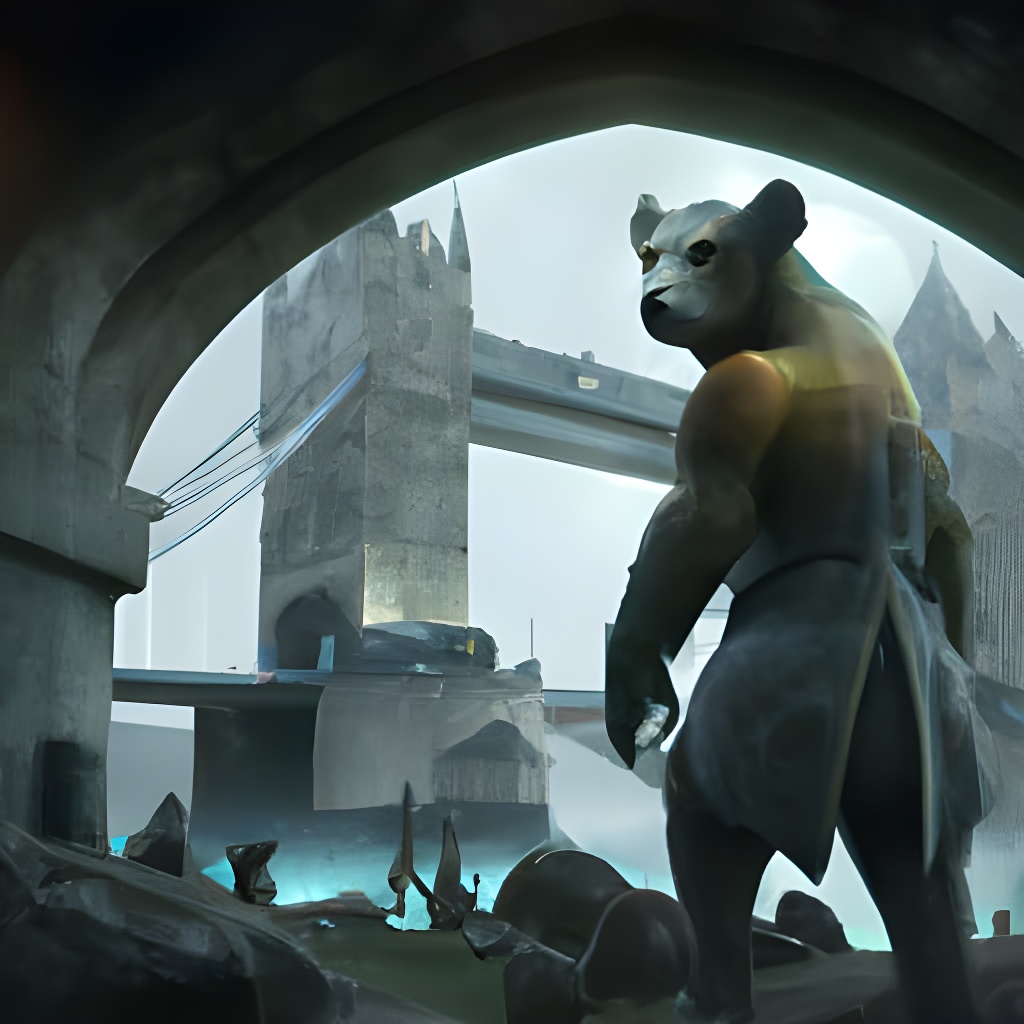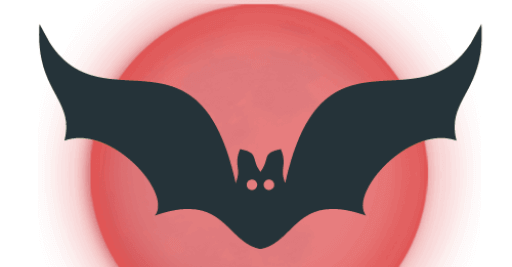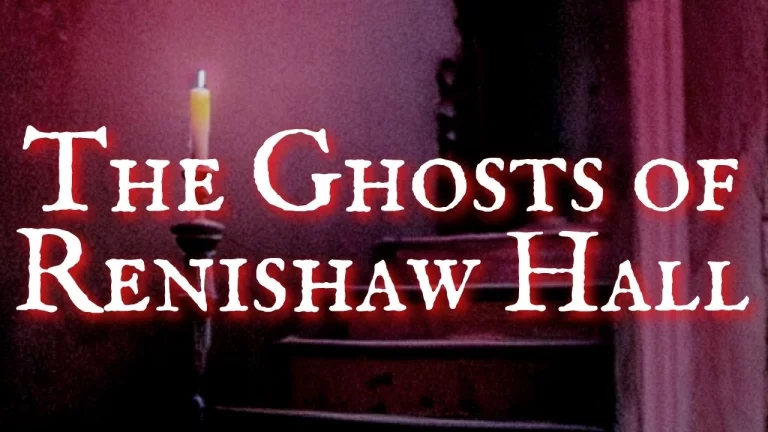
The Ghost Bear of The Tower of London
This is the memoir of Edward Lenthal Swifte Keeper of the Crown Jewels in the first half of the 19th Century
“In 1814, I was appointed Keeper of the Crown Jewels in the Tower where I resided with my family until my retirement in 1852.”
“One Saturday night in October, 1817, I was at supper with my wife, her sister, and our little boy in the sitting room of the Jewel House. The room was, as it still is, irregularly shaped, having three doors and two windows, which last are cut nearly nine feet deep into the outer wall. Between these, there’s a chimney piece projecting far into the room, and then surmounted with a large oil picture.”
“On the night in question, the doors were all closed, heavy and dark cloth curtains were let down over the windows, and the only light in the room was that of two candles on the table.”
“I sat at the foot of the table, my son on my right hand, his mother fronting the chimneypiece, and her sister on the opposite side. I had offered a glass of wine and water to my wife, when on putting it to her lip.
“She paused and exclaimed, “Good god, what is that?”
“I looked up and saw a cylindrical figure, like a glass tube, seemingly about the thickness of my arm and hovering between the ceiling and the table. Its contents appeared to be a dense fluid, white and pale azure, like the gathering of a summer cloud and incessantly mingling within the cylinder.
“This lasted about two minutes when it slowly began to move before my sister-in-law.”
“Then, following the oblong shape of the table before my son and myself passing behind my wife, it paused for a moment over her right shoulder. Observe! There was no mirror opposite to her in which she could there behold it.”
“Instantly she crouched down and with both hands covering her shoulder, she shrieked out. ‘Oh Christ. It has seized me!’”
“Even now while writing, I feel the fresh horror of that moment. I caught up my chair, struck at the wainscot behind her, rushed upstairs to the children’s room and told the terrified nurse what I had seen.”
“Meanwhile, the other domestics had hurried down into the parlor where their mistress recounted to them the scene, even as I was detailing it. “
There is a postscript to this story again, recounted by Mr. Swifte. It took place a few days after the apparition of the glass tube.
One of the night sentries at the Jewel House, a man who was in perfect health and spirits and was singing and whistling up to the moment of the occurrence, was alarmed by a figure that looked like a huge bear issuing from under the Jewel Room door.
He thrust at it with his bayonet, which struck in the door even as Swifte’s thrown chair had gone through the cylinder ghost and dented the wainscot.
The soldier collapsed and was taken unconscious to the guardroom.
Swifte says that “when on the morrow I saw the unfortunate soldier in the main guardroom, his fellow sentinel was also there and testified to having seen him at his post just before the alarm awake and alert and had even spoken to him. I saw the unfortunate man again on the following day, but changed beyond my recognition.”
“In another day or two, the brave and steady soldier who would’ve mounted a breach or led a forlorn forlorn hope with unshaken nerves died at the presence of a shadow.”
As far as I’m aware, there have been no other sightings of either the cylinder of fluid that floated in the room, or the ghost bear.
When you get an account like this, people will try to dig into it to discover the truth.
There is a blog called strangehistory.net, with an article entitled, ‘The Cylinder Monster.’
In the first part of his blog article is the verbatim account of Lenthal Swifte that we’ve already quoted, which sets out what he saw in 1817.
StrangeHistory points out that there were four people in the room— the wife who was grabbed, Swifte himself, and of course the son, who was six years old, and Swifte’s sister-in-law.
These latter two didn’t see the cylinder.
Swifte recounted elsewhere:
“I’m bound to add that shortly before this strange event, some young lady residents in the tower had been, I know not wherefore — suspected of making phantasmagorial experiments at their windows, which be it observed, had no command whatever on any windows in my dwelling.”
An additional sentry was accordingly posted to overlook any such attempt by the young ladies to summon spirits.
We must try to work out what that means.
Mesmerism
Mesmerism was still very popular in 1817, and it contains this idea of animal magnetism.
This is the belief that we have an electrical force in us that animates us. Of course, this idea was behind Mary Shelley’s book Frankenstein, which was published in 1818, the year after this apparition.
Electricity, which was a pretty new discovery, was the force that enlivened everything.
Animal Magnetism is embodied in a creature, but they believed it could be disembodied and float free as well.
The idea originated with Franz Mesmer.
Franz Mesmer was born in 1734 and died in 1815. He was a German physician with an interest in astronomy. Mesmer had a theory that there was a natural energy called animal magnetism (later referred to as mesmerism) and that a transference of this energy occurred between all animated and inanimate objects.
Later on, this became related to hypnotism, but it wasn’t called that until 1843.
The idea of hypnotism was that you put somebody under the “fluence,” which was this this animal magnetism.
The word ‘influence’ is from Latin “influere,” from in- ‘into’ + fluere ‘to flow’. As you can see, it conveys the idea of a fluid.
Electricity was originally conceived of as a kind of fluid, and the word influence had the sense of ‘flowing matter’
Mesmer would hypnotize people and claim it was by using this electrical fluid.
That is maybe what’s behind Swifte’s description of a cylinder of fluid. He did not have the concept of plasma, and most likely we would see this cylinder as a kind of plasma now.
Don’t forget that later on in the 1800s, the idea of a spiritual fluid evolved into ectoplasm, and we see again the root of the word that is in plasma, such as we see in a neon electrical light tube.
The root ‘plasma’ is from the Greek, meaning ‘something formed or molded.’
One wonders what these young ladies were suspected of. It is not impossible that they were trying to invoke some kind of ‘animal magnetism’ from their rooms at the Tower of London, much as the fictional Dr Frankenstein did for his monster around the same time.
Is that what is being proposed by Swifte here — that these young ladies had in some way conjured this mysterious cylinder?
At no time does he suggest it was a ghost, remember?
He explains it in terms reminiscent of Mesmerism, which had the character of an accepted scientific belief. But of course it wasn’t animal magnetism, because we know that doesn’t exist.
It was something more mysterious than that.
The Cylinder and The Ghost Bear
The appearance of the ghost bear occurs shortly after the appearance of the cylinder.
Ghosts don’t normally harm people, but this thing killed the sentry.
Clearly in Swifte’s mind, the cylinder and the appearance of this ghost bear are related. They’re related in time of course, and in place, but if you’d heard of them separately, you wouldn’t connect them.
The death of the guardsman seems to be a documented fact, although we can’t know what he died of.
As I heard the story of the sentry in the Tower of London, I remembered a story that I’d heard from Carlisle Castle, which was also a military fortress belonging to the Crown.
Here, in 1842, a sentry on guard duty in the keep challenged the figure of a woman who approached him in the early hours of the morning.
As she ignored him, he shouted to rouse his fellow guardsman. Then, raising his bayonet he charged the figure.
“Just as he reached her, the woman simply melted into thin air, whereupon the soldier fainted, clean away.
Although his comrades managed to revive him, such was the shock to his system. Having told them what had happened, he promptly felt back and died.”
So you can see the similarities.
There’s the guardsman in the Tower of London who sees his shadowy bear figure and jabs at it with his bayonet, and it goes right through. The bear disappears. The sentry collapses and later dies .
Then, a few decades later, in 1842, in Carlisle, 300 miles away, another sentry patrols another royal fortress.
This man sees a ghost woman rather than a ghost bear.
Other than that, it’s exactly the same story. Both claim to be documented, but I wonder if they’re actually true.
Maybe they’re both true. Who knows? Strange things happen.
Earth Lights
I would like to reference the theory of “Earth Lights’ by a man named Paul Devereux.
In the late 1970s, Paul Devereux was in the late 1970s and connected with the Dragon Project. He’s an academic. In the Dragon Project, Devereaux led a group of people around stone circles in Britain to measure all kinds of energy the stones were giving off: ultrasound, infra-red, ionizing radiation, and he even measured the effect of the standing stones on the dreams of people who slept nearby
It’s really interesting, and I’ve written a couple of articles on it.
Paul Devereux published a book in 1982 called Earth Lights:Revelation, and what he said was that there are lights which are seen and they’re mistaken for UFOs, dragons and all manner of supernatural events.
They are different colors and the theory is that they are actually some kind of electrical discharge created by tectonic fault lines.
There are two fault lines running beneath London, one of which runs beneath Canary Wharf and runs southeast-northwest, about a mile east of the Tower of London.
But there’s another fault line that runs under central London itself. These were only discovered by researchers from Imperial College in London in 2018, but it is possible that the fault line runs underneath the Tower of London.
Devereaux’s idea was that when there’s tectonic strain, there can be a kind of plasma discharge that gives off these lights. These lights are seen all over the world.
One hotspot for things like this is Longendale in the Peak District, where there were stories of the Longendale Dragon, and there’s another place in Norway called Hessdalen that is famous for its apparitions and seems to be related to a fault line.
In the USA, they’re called “spook lights” or “ghost lights.”
I wrote an article about Skinwalker Ranch, and there too, mysterious colored balls of light are seen flitting around. In this case, they were said to be UFOs. But what if they are earth lights caused by geological activity?
They have been mistaken for dragons, it seems”
“A wonderfully large dragon was seen over St Ostwyth within Essex in 1170, having been borne up from the earth through the air.”
Are Foo Fighters (an early name for UFOs) Earth lights as well?
The Tower of London Cylinder Again
Swifte saw the cylinder of white, azure fluid.
We’ve already said that he appears to have understood it within the contemporary concept of animal magnetism, a strange electrical life-force.
It may have been caused by some kind of tectonic stress, although I would say if that was the case, why aren’t they seen more often?
This phenomenon is recorded only once in the history of the Tower of London.
Then we have the apparition and this story of a soldier seeing it, stabbing it with his bayonet, and then dying a day later, despite him being a heroic warrior. This was more or less exactly repeated 24 years later in another part of England in a very similar circumstance.
In 2015, an author called Roger Clark, did a bit of research into Lenthal Swifte, and he says when he found a bit more about him,
“He was an Irishman who sought preferment with the king by writing a long poem in his honor.”
Essentially, Swifte was a writer, and a fantasist according to Roger Clark.
That may be unfair to base a man’s character on so little evidence.
Clark says, “He was rewarded for his pointed royalism with the tower job”,
But Swifte was at least reasonably competent because he kept the job for decades.
More digging reveals, in 1843, an obituary from the Protestant church in Athens, dated November 20th at Hobart Town:
Age 32, Theophilius Swifte, esquire, eldest son of Edmund Lenthal Swifte of Her Majesty’s Jewel House, whose death was occasioned by an apothecary who negligently administered too large a quantity of laudanum.
Presumably, he had a respiratory arrest. Laudanum was a popular drug back then and caused lots of addiction and lots of misery, and lots of death.
It’s a mixture of alcohol and opium, and you can imagine people liking it, but I don’t think it does you any good and clearly didn’t do any good to the young Theophilius Swifte.
It appears the Swiftes were a colorful family, but none of this is anything like proof that Lenthal Swifte was lying about what he saw. Remember, he didn’t even see the ghost bear and never claimed to.
If he was an attention seeking fantasist, I think he would have claimed to have seen the bear.
None of this digging around on the internet, brings us any closer to understanding what was actually seen.
But I think Swifte and his wife saw something unusual. And this is a very interesting aspect about many unexplained phenomena.
We have an experience, and we try to make sense of it . We try to fit it into the conceptual framework that is best suited.
Sometimes the only one at hand is pretty outlandish, and I think Swifte did this. He had an experience and then tried to make the best sense he could of it. The only remotely applicable framework was the idea of animal magnetism, or a disembodied electrical force.
The Ghostly Ball
I remember a similar experience myself.
It was New Year’s Day. I was probably about 19. I’ve been out all night, and I was walking home, and I was slightly hungover.
There was nobody on the road. It was daylight but there were no vehicles about.
I was strolling along, minding my business. I may have been whistling like the sentry, and then this round ball came, rolling over the road.
I thought, “What on earth is this?”
It wasn’t a football; it was like some kind of organic thing.
I thought, “Really, what is this?”
The organic green ball rolled towards me and I panicked and I kicked it. A cloud of green gas came out of it.
I thought ‘Oh, my goodness!’
I’d never seen anything like it.
I had no idea what it was. Was it an alien? Was it some kind of weird fairy manifestation ? I left it where it was and ran off.
And then later on, I figured out it was a big puffball mushroom.
When I went and kicked it, those were the spores, but I had no idea what it was at that time, and lacking the knowledge of puffball mushrooms, I ascribed to it some kind of supernatural origin.
It’s a funny old world, and there’s a lot of things we don’t understand. We just do our best to fit anomalous experiences into our existing knowledge base.
Sometimes we think odd things are supernatural when they are not.
I don’t think anything is actually supernatural, that is outside nature.
The truth is that we’re never going to be able to go back to 1817 to that night in July and see what Swifte saw, but I’m sure he saw something.
There are so many people who say they see ghosts and other things. People have reported seeing oddities ever since we started writing things down.
If you go back to the Old Testament, there are ghosts in that and that’s probably one of the oldest texts we have.
We have ghosts in ancient Indian literature and ancient Chinese texts.
I don’t know if the cylinder ghost was a ghost or an earth light. I don’t begin to claim to know what the ghost bear of the Tower of London or the ghost woman of Carlisle Castle were.
But when it comes to entities outside our normal experience, I’m a believer. You make your own minds up.

